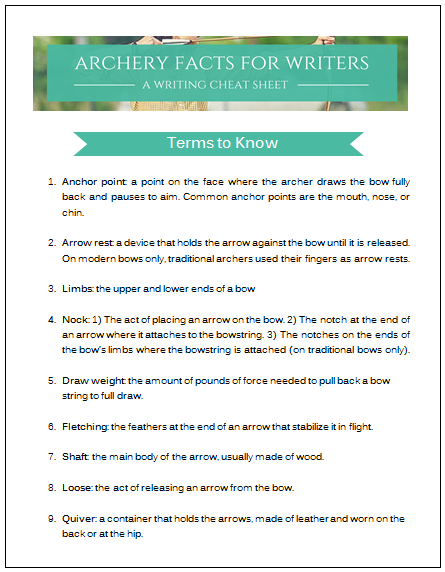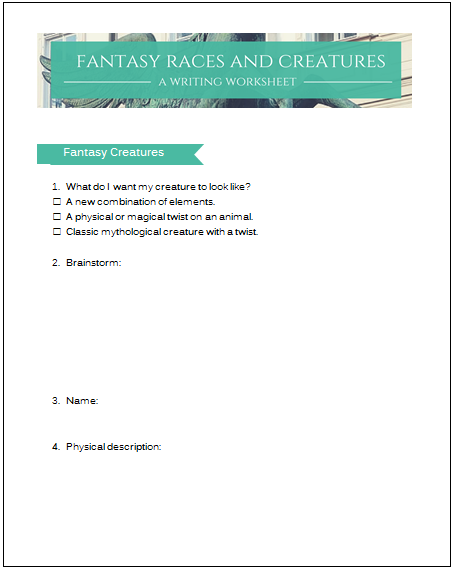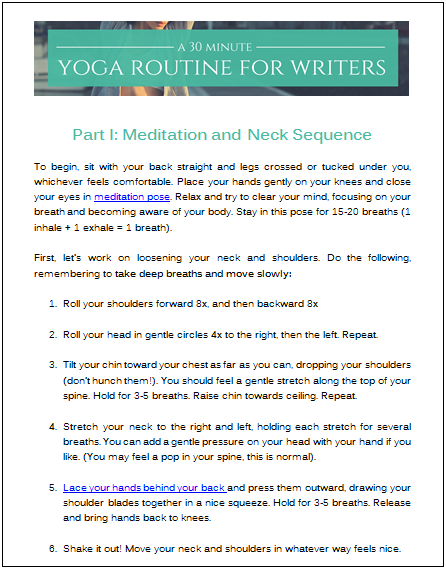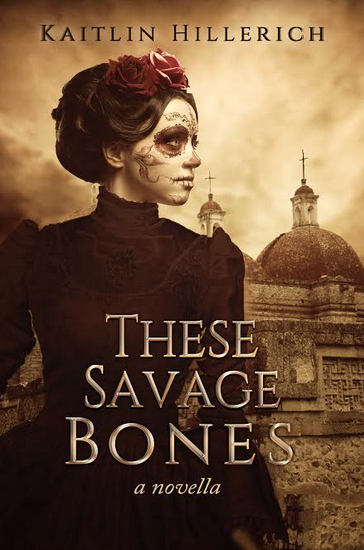 If you write fantasy, you probably have a horse or two in your story. Especially if you’re writing medieval fantasy. Or, maybe you’re writing historical fiction. Whatever you’re writing, if there’s a horse in it and you don’t have a clue about horses, you’ve come to the right place. I’ve created this writer’s guide to horses just for you!
If you write fantasy, you probably have a horse or two in your story. Especially if you’re writing medieval fantasy. Or, maybe you’re writing historical fiction. Whatever you’re writing, if there’s a horse in it and you don’t have a clue about horses, you’ve come to the right place. I’ve created this writer’s guide to horses just for you!
I’ve been in love with horses ever since I was a kid. I took riding lessons for years and read way too many books about them, both fictional and non-fictional. When I started writing my first fantasy novel, you had better bet I had horses in it!
But not every writer is a horse person. They always say write what you know, and I knew horses so that was what I wrote. But if you feel confused or lack confidence when writing scenes involving horses, don’t worry! With a little bit of research you can write about horses so well that your readers will think you’ve been living in the saddle your whole life.
Ready to arm yourself with some horse knowledge? Let’s do this.
Physical Description
- Here is a chart of the parts of a horse (the ones you will likely reference most in your writing will be the flank, hoof, hock, withers, and crest).
- Here is a guide to horse colorings, and another to markings.
- Horse genders: mare (female), stallion (male), gelding (neutered male), colt (baby male), filly (baby female).
Care and Needs
- Keeping a horse was expensive, so most peasants didn’t own one. Sometimes peasants would chip in together to buy a horse and share it.
- Horses were usually kept in barns, and sometimes peasants just kept them out in the fields with the sheep, cows, etc.
- Horses were fed hay, oats, and sometimes bran. The amount of food they were given depended on the amount of work they did. They also grazed in pastures in the summer.
- Horses will forage in the woods for food, eating shrubs, foliage, moss, and even bark.
- Most horses wore shoes during medieval times, which were made of iron.
- Horses were groomed with a handful of straw bound together, or a coarse cloth. Metal curry combs were also used. (Modern metal curry comb for comparison).
- Horses drink 5-10 gallons of water a day. They can only survive 3-6 days without water.
- Horses cannot puke. So if they eat something toxic, they can’t puke it back up.
- Horses live to be 25-30 years old.
- Horses can swim, but some are afraid of water.
- Horses only sleep for 2 hours a day, and only a few minutes at a time. They usually sleep standing up, but sometimes they will lie down. This is because they are prey animals, so they must be ready to take flight at the first hint of danger.
Behavior
- Horses are sort of like big dogs. They all have their own personalities and quirks. However, they’re less loyal/protective than dogs–if your character is thrown on the battle field, his horse will likely bolt. It’s their fight or flight survival instincts. However, there are stories of horses protecting their owners, though it’s rare. It might depend on the rider’s bond with the horse and whether the horse sees the rider as part of its “herd.”
- Horses are herd animals, which means they’re social and prefer to live in a group. If they are being kept on their own without other horses for company, they will often befriend other animals like donkeys, sheep, goats, cows, etc.
- Horses communicate using snorts, nickers, whinnies, squeals, and neighs. (From softest to loudest). A whinny is similar to a neigh, but a neigh is a little deeper. For more information on why and when horses make certain sounds, click here.
- Horses communicate mostly through body language, and are pretty quiet animals. (Again, prey animal instincts). For more details about horse body language go here (scroll to the bottom).
- Every horse is frightened by different things, whether it’s a predator, an unfamiliar object, a loud noise, an unexpected movement, or water. When a horse is frightened or “spooked”, he might shy away, buck, balk, or bolt.
Riding & Traveling
- Medieval saddles are pretty similar to modern saddles. “War” saddles were a bit “deeper” to offer the rider more security, with the front and back parts rising higher. “Riding” saddles were more slender. However, sometimes war saddles would be used for riding and vice-versa.Click here to learn the parts of the saddle (the ones you would use most in your writing would be the cantle, pommel, seat, and stirrup). Also, this video shows you how to saddle a horse.
- Medieval bridles are also similar to their modern counterparts. To learn the parts of the bridle, click here.
- It was common for women to ride astride in medieval times (one leg on either side of the saddle). Side saddles were rarely used, and only by noble ladies.
- It was common for women to ride horses during travel, and noble women also rode horses during hunts.
- Horses have four different gaits (the term used to refer to a horse’s speed). From slowest to fastest: walk, trot, canter, and gallop.
- At a gallop, a horse can reach a speed of 25-30mph. A horse can gallop for a couple of hours before losing steam. So unless your character is riding Shadowfax, avoid epic days-long gallops.
- The distance a horse can travel in a day depends on the weight and skill of the rider, the age/health of the horse, the weather and terrain, and how much equipment the horse is carrying. A horse could cover 20-40 miles a day and can be pushed beyond this if need be, but will need a day or more to recover afterwards depending on how hard it was pushed. Remember horses aren’t furry motorcycles, they get tired!
- If your character is riding a horse for the first time or for a longer period of time than they’re used to, they will be sore after. This is often called “saddle sore.” Riding a horse looks easy, but you’re not just sitting there! You’re actually using a lot of muscles in your body. Saddle soreness is something better experienced than described. Which brings me to my final point…
I would highly recommend riding a horse at least once for research, whether it’s a trail ride or lesson. There are things you experience in real life that you can’t learn from a book or article.
Pay attention to your senses. What does the horse and stable smell like? What sounds do you hear? How do the horse’s coat and mane feel? How does the horse move beneath you? If you can’t get on a horse, here’s a video of a rider’s eye view from the saddle.
Even if you’ve never been on a horse you can write scenes involving horses well as long as you do a little research 😉
Have more horse questions? Post them below!
























You know, I grew up in a very horse-rich area (lots of agriculture; best friend did rodeo), and yet the amount of things I don’t know about horses is astonishing. I’ve run into so many problems with my newest project because I needed to know little things about horses here and there (like travel speed), so thank you, Kaitlin! This is so super helpful!
Haha I live in Louisville, Kentucky, as in home of the Kentucky Derby so I’m surrounded by horses. I knew a lot about them because I was obsessed as a kid (and I still am in love with them), but when it came to my story there were still things I would get stuck on. I’ve found when you’re writing you always end up needing to know the weirdest, most obscure details that are difficult to research haha.
I’m glad you found it helpful, thanks for stopping by! 😀
Thank you so much for a very informative article. It is very true that when you are writing, there are so many little things that you never thought about until you have to describe it in your writing. You covered basically everything I wanted to know about horses, from parts of a saddle to speed, gait and types of horses. Links to pictures and videos made it easier to see exactly what you meant. Awesome article. Thanks for taking the time to write it.
You’re very welcome, I’m glad you found it useful! 😀
This is an amazing list, Kaitlin! Thanks for putting this together. 😀 My WIP’s heroine also rides a horse; and while I’ve been doing my research as the writing and revising has gone along, it’s great to have one spot where I can find just about everything I need now.
You’re very welcome! ^.^ I’m glad you’ve found it helpful for your research!
Great post! So keeping this for reference! I’ve spent a lot of time around horses growing up, but I found some great tidbits of knowledge in here I didn’t know perfect for the fantasy novel I’m editing–that includes lots of horseback riding lol. Thank you!
storitorigrace.blogspot.com
Yay! Glad it was helpful for you 😀
I love horses and have a lot of book knowledge, but I really was struggling not to “romanticize” horses. I started out with the Protagonist (Cirra, hence my name.) riding a horse that had a lot of human character traits and “only she could tame” which is so unbelievably clichéd…This article and another one really helped me with my current NaNoWriMo (and beyond) WIP. Thank You! – “Cirra”
I know what you mean, I definitely romanticized horses in some of my first stories. Glad the post came in handy for your story!
Another thing frequently overlooked is the nature of stallions. The average nice little riding horse seen on TV or in movies is not a stallion. They will have a tendency toward aggressiveness and caution must be used. And mixing stallions with a bunch of fertile mares – yikes!
Good tips and very nice that you includes links with pix so the readers could see what you meant. I’m from Lexington and worked on farms and the racetrack, as well as just being a horse lover in general, and I didn’t see any mistakes in your suggestions.
Oh yeah! Stallions are crazy! I’ve only ever been around one that was a stud being boarded at the stable where I took lessons. He would go nuts in his stall when there were mares around. No way would I want to ride that!
Oh nice I’m from Louisville, so we’re (sort of) neighbors! 😀 haha. I’m glad my article is approved by a horse expert 😉
Thank you for this very helpful article. My husband and I a 100 + pages deep into our first collaborative novel and it was finally time to bring in the horses. I’ve already done a fair amount of research on other aspects of medieval life such as clothing and sword fighting techniques etc and your succinct descriptions about all things medieval horses just made this chapter quite a bit easier to write 😉
Yay I’m so glad you found it helpful! I know way too much about horses, I was obsessed growing up haha. And that sounds like such a fun project, I wish you both the best with your story! 😀
Love this, I write about a 17th century cavalry troop and believe you me I write about real horses 🙂
WIP has our hero taking a mare in season on long walks round the outside of a castle… in certain knowledge that at least one of the defenders is going to have a stallion *inside*. Bored, frustrated, mare in season half a mile away.
Dear me, it’s going to get noisy in there….
Hi. Thanks for the great post.
Would you be able to talk anything about two riding a single horse? Is it a movie thing? Is it realistically possible for any length of time? Are there specific variables involved?
Hi Ali! Riding double is possible, but should only be done for a short period of time as it’s not good for the horse’s back. The amount of time will depend on the size of the riders (for example, two small children versus two grown men, or a man and a small woman). The combined weight of the riders will slow the horse, which will effect how fast and far it can travel.
You will also need to consider the saddle–two people can’t fit in the same saddle. Riding double is best done bareback so that the weight of the riders is distributed evenly. Otherwise, one rider will need to sit behind the saddle, and this uneven distribution of weight will make it harder for the horse to keep its balance, especially on rough terrain, so it might stumble.
Here’s a discussion in a Fantasy Writing forum that goes more in-depth if you need to know more: http://www.sffworld.com/forum/threads/horses-riding-double-whats-possible.27134/
Hope that helps, and good luck!
This is a fantastic post! Thanks so much for putting it all together. I used to spend a lot of time around horses and read everything “horse” that came into my hands. Sadly, time and circumstances changed and I never had the many riding lessons I wanted, nor the horse I dreamed of. This brings back memories and will be very useful to get facts straight in my writing.